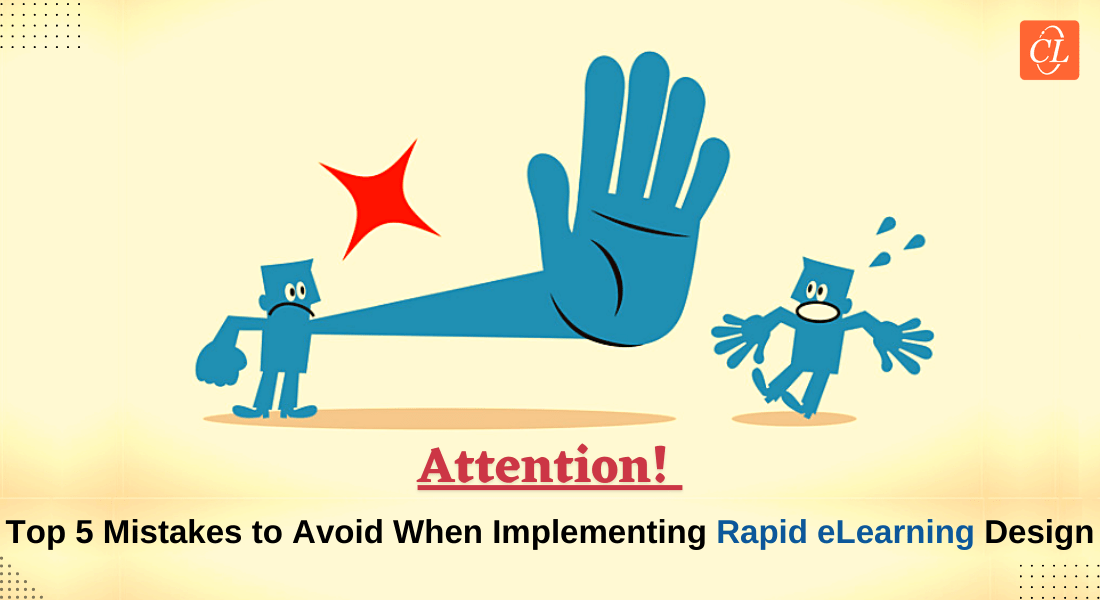5 Reasons Your Learners Love to Hate Your Online Training Modules

“The evil that is in the world always comes of ignorance, and good intentions may do as much harm as malevolence, if they lack understanding”
– Albert Camus (French author, philosopher and Nobel Prize winner)
The above quote emphasizes that the good intentions of ignorant people can cause as much harm in this world as the works of evil people. This quote holds good and true even in the corporate training world. In online training, good intentions of eLearning designers and experts can often prove dangerous if they lack understanding of the learner’s needs and interests. Let me explain:
With all good intentions, course developers and subject matter experts (SMEs) create online training modules. They try their best to ensure that the online training modules are loved by the learners and guarantee maximum training ROI. They include all sorts of content, multimedia elements, interactivities, assessments, and a lot more.
If Your Learner Says, “I Hate This Online Training Module!”
Here are the possible mistakes you might have made:
- Lengthy Courses
- Not Understanding the Audience
- Rigid Training
- Lack of Engagement
- No Testing Conducted
But the end result is often far from expected – the courses are unappreciated and do not yield the desired results. In this blog, we’ll see some of the possible reasons why online training modules fail to create an impact.
Let’s start!
5 Mistakes Why Your Learners Hate Online Training Modules
#1 Lengthy Courses
Average human attention span has been steadily declining and currently stands at 8.25 seconds. A Microsoft Corp. study says that our attention can be less than that of goldfish, which is 9 seconds! Lengthy online courses are not appreciated. Employees quickly lose interest, thereby making it impossible for them to understand or retain information. This makes learners hate your online training modules and heavily contributes to training failure.
→ Download Now: Instructional Design 101
So keep in mind that the online training modules must be short and crisp. Apart from that, you can:
- Use bullet points
- Use short and crisp sentences
- Provide bite-sized learning nuggets (microlearning) instead of long text
- Use videos instead of text
- Provide hyperlinks for additional information
#2 Not Understanding the Audience
Understanding your employees and their learning needs is integral for creating relevant, effective online training modules. Simply using an off-the-shelf course that doesn’t align or cater to your audiences’ learning needs will be ineffective. So make sure you design courses based on the learning requirement and objectives. Set SMART learning objectives.

Understanding your learners and designing courses based on that will boost learner engagement and help you achieve the desired training results. When if you’re using off-the-shelf courses, opt for the ones that can be customized to fit your learners’ needs.
Check out the video below to understand how custom eLearning can elevate your corporate training.
#3 Rigid Training
It’s human tendency to want to be free and have control over one’s life. So why should it be different with the courses that you provide your learners? In today’s time, flexibility and accessibility are one of the main factors that decide the effectiveness and completion rates of the training modules. Freedom within boundaries can make a big difference to a learner. Here are some ways learners can have control over their learning:
- Allow them to choose course content
- Allow them to decide the starting point in a course
- Give them the freedom to navigate through a course and explore the content
- Add videos and hyperlinks that they can access if they want to
- Add additional course material but making it optional
- Give them the freedom to access training modules on any device, anywhere
#4 Lack of Engagement
Employees hate courses that are dull, boring, and monotonous. One of the advantages of online learning is that, unlike textual learning, it can be made interactive and highly engaging. Course creators can use various tools and resources to make a course as visually-appealing and interactive as possible. They can add multimedia elements, eLearning interactivities, pop-ups, assignments, digital flashcards, etc. Because creating a text-heavy course leads to boredom, disengagement, and repulsion for online training. So here’s how you can make an online course engaging:
- Design user-friendly, appealing interface – take the time to design the look and the feel of the course
- Align courses with learning goals
- Leverage instructional design strategies like gamification, storytelling, scenario-based learning
- Make sure the course content is relevant
- Make the course interactive
- Add assignments after each subchapter, chapter, and at the end of the course
#5 Not Conducting Pre-launch Testing
Quality analysis is a big part of any online training course. But this often goes no further than making sure that the course runs smoothly on the designated platforms and there are no technical glitches. While there is a designated team in charge of quality, no course is truly evaluated from learners’ perspective. Try gaining feedback from a set of learners before it goes live.
Ask them if they like the course or not, what is it that they like, what they don’t like, what works for them, and what doesn’t work for them. This will help you gain insights into how your online training course will work. Moreover, even when your courses are live, you can continue to solicit feedback from the learners and modify the training courses for maximum impact and efficiency. Here are a few ways to garner feedback from the learners.

In The End!
Don’t give your learners any chance to hate your eLearning modules. Put your best foot forward by creating high-impact, engaging, and learner-centric online training modules. And to do so avoid the mistakes highlighted in this blog. Go ahead and make your online training courses a smashing success! To leave no stone unturned, check out the handy guide on instructional design given below.
Editor’s note: This post was originally published in July 2016 and has been updated for comprehensiveness.





